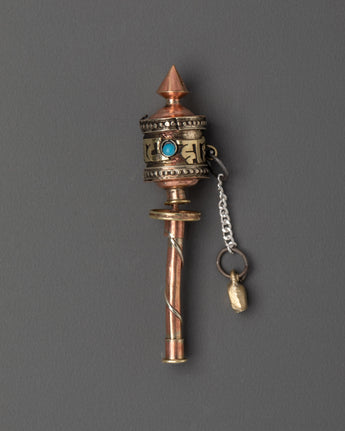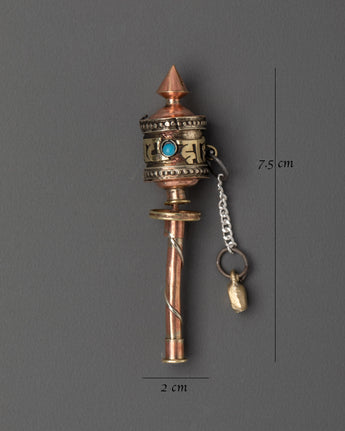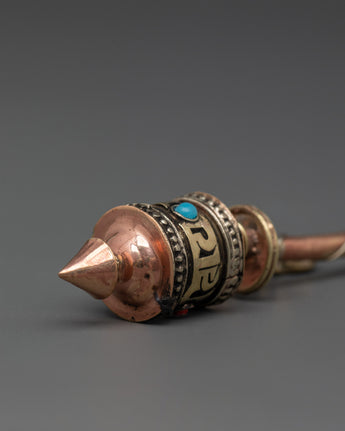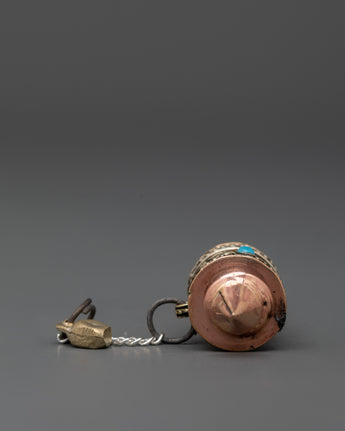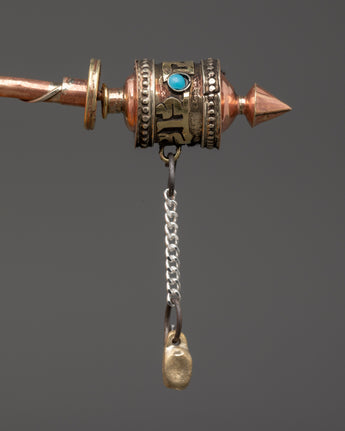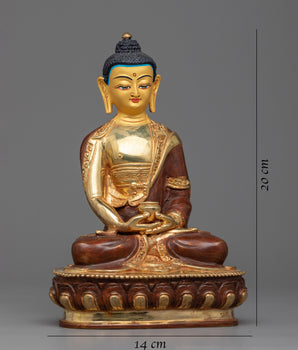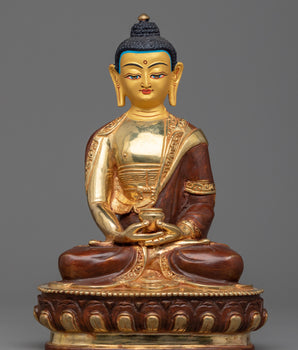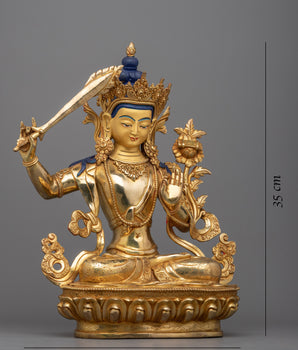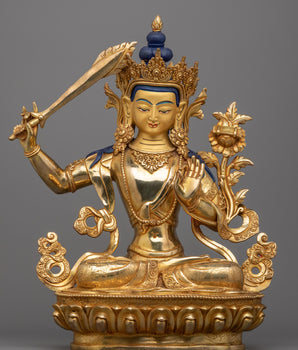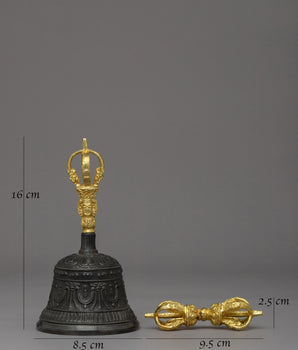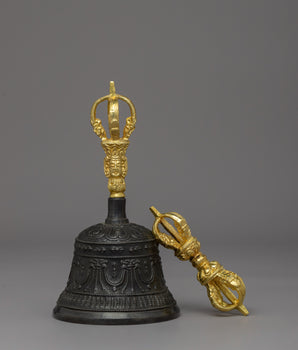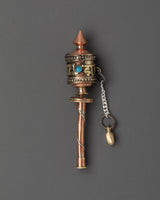
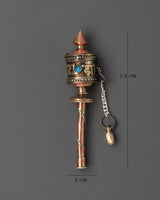
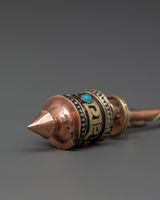
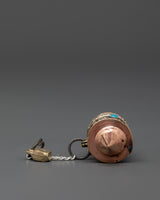
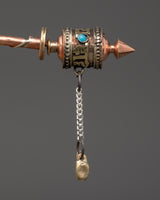
Handmade Tibetan Brass Prayer Wheel | Spiritual Tool for Mindfulness

100% AUTHENTIC

HANDMADE

FREE SHIPPING
Sacred Tibetan Brass Prayer Wheel | For Spiritual Blessing and Positive Energy
--------------------------------------------------------
Size: 7.5cm (Height) x 2cm (Width)
Weight: 0.010kg
Materials: Copper Body, Brass Body, Turquoise ( Artificial Stones)
--------------------------------------------------------
About our Prayer Wheel
This Tibetan Brass Prayer Wheel, measuring 7.5 cm in height and 2 cm in breadth, weighing about 0.010 kg, is made of a copper or brass body decorated with artificial turquoise stones. These prayer wheels are spiritual tools used in Tibetan Buddhism to acquire wisdom and merit, as well as to purify negativities by spinning the wheel, which is frequently inscribed with the mantra "Om Mani Padme Hum" and filled with mantras inside.
Prayer wheels are used to gather insight and merit, purge negative energies, and promote compassion. Prayer wheels are used mainly in Tibetan Buddhism and are commonly found in Tibet, Nepal, and Bhutan. Devotees spin the prayer wheel clockwise while reciting prayers or mantras for purifying negative Karma.
Introduction to Prayer Wheel
A prayer wheel is a cylindrical device on a spindle, used in Tibetan Buddhism. It is typically inscribed with the mantra "Om Mani Padme Hum" and rotated by hand as a form of spiritual practice and to accumulate merit. Spinning the wheel is believed to have the same spiritual benefits as reciting the mantra verbally. The use of prayer wheels is widespread in Tibetan Buddhism and has spread to other cultures.
How does the Buddhist Prayer Wheel benefit us?
The benefits associated with rotating the wheel are numerous. It promotes knowledge, compassion, and bodhicitta in the practitioner and enhances siddhis (spiritual powers, such as clairvoyance and precognition). The practitioner can repeat the mantra as often as possible while the wheel is rolling, maintaining a calm, meditative attitude. A Tibetan Buddhist tradition holds that after a practice session, one should dedicate any acquired merits to the benefit of all sentient beings. Then three times Om Ah Hum. This is usually among Tibetans after finishing any Buddhist practice, including the prayer wheel exercise.
How do you set up your own Buddhist Shrine?
• Find a clean, quiet, and uncluttered spot
• Set up an altar table and cover it with an altar cloth that calls to you
• Place your sacred item at the center


